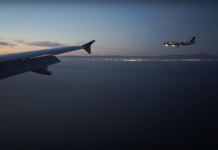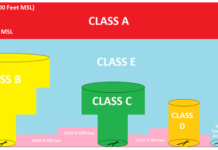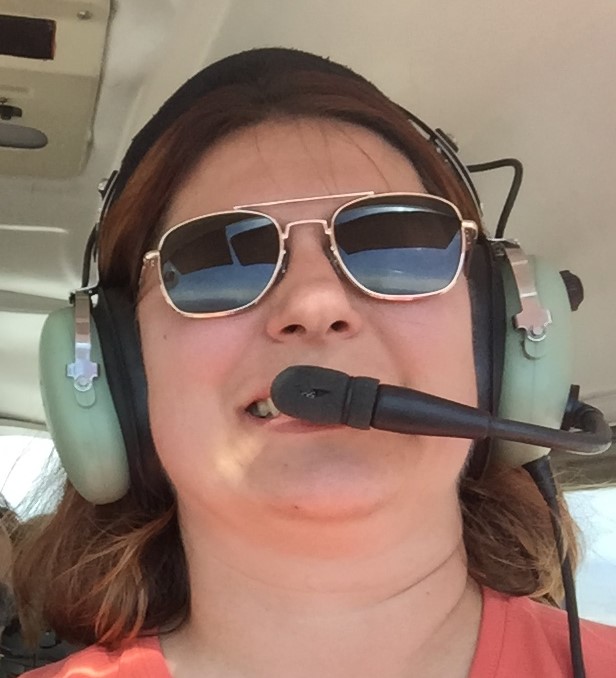Twilight, and understanding twilight for aviation is important for one reason; Night flying.
Can you log the hours you flew as night time flight? Are you current in night flight? As we enter the fall / winter months our daylight hours get shorter so pilots start caring about these nuances more. The definition of twilight, and which twilight is important for what purpose, can be confusing to understand. Let’s break it down to help that understanding.
Twilight
The dictionary definition of twilight is “the light from the sky between full night and sunrise or between sunset and full night produced by diffusion of sunlight through the atmosphere and its dust.”
Hmm, that’s not entirely helpful. What is ‘full night’ in this definition? Let’s go one step deeper.
Twilight is from the moment the sun is fully below the horizon (sunset) until there is no more sunlight and the sky is completely dark. Or the reverse in the morning, when the sky starts to brighten, but the sun is still below the horizon. All things being equal, the sky is completely dark when the sun is 18* below the horizon.
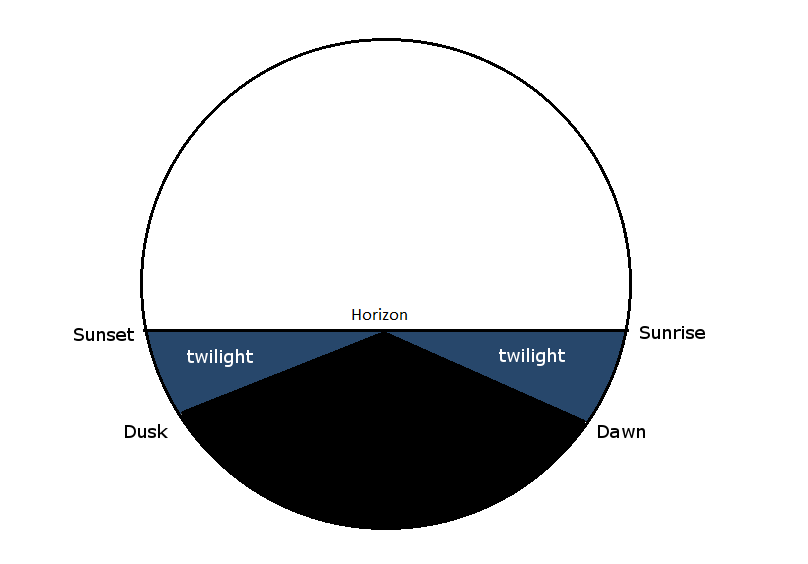
As if this isn’t confusing enough there are three sub-categories of twilight. Civil twilight, nautical twilight, and astronomical twilight. For the purposes of flight, we really only care about Civil twilight.
Civil Twilight
The period between sunset and when the sun is 6* below the horizon. And is defined in the Air Almanac, by the United States Naval Observatory, to be the brightest twilight and that “in good conditions and in the absence of other illumination, is such that the brightest stars are just visible, and terrestrial objects can be easily distinguished.”
Now, let me tell you the last time that I pulled out a protractor and measured when the sun was 6* below where I could possibly see it. In fact, even the air almanac states that this is an ‘arbitrary condition’. So, after further research into the almanac I found that it specifically lists the start/end time of civil twilight for every third day of the year.
For example, this post was written on September 26, 2016 and according to the air almanac morning civil twilight starts at 0525 for my latitude and evening civil twilight ends at 1817. It also has sunrise at 0550 and sunset at 1752.
This is great for planning purposes but I really don’t feel like pulling up a gigantic scientific document every time I want to fly to understand when night time flights count. So, based on simple math one can determine that on average Civil twilight lasts for about a half hour after sunset and before sunrise.
Now we are getting somewhere. Sunset and sunrise is usually shown on the morning news and every weather channel you can find. So I can guess the approximate time of civil twilight based on the daily report of the sun.
Night Flights
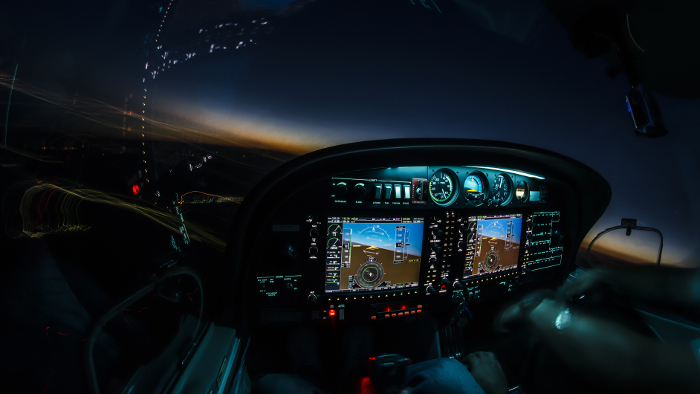
All this information really comes down to the night flight. Based on FAR 1.1, “Night means the time between the end of evening civil twilight and the beginning of morning civil twilight, as published in the Air Almanac, converted to local time.”
So, you can log a night flight between the period of 1/2 hour after sunset to 1/2 before sunrise.
However, federal organizations can’t really make something quite that easy so there are other definitions of ‘night’ that a pilot needs to understand.
Required use of lights can be found in FAR 91.209 and that states “from sunset to sunrise…[No person may] operate an aircraft unless it has lighted position lights.”
There is some specific wording in regards to Alaska that you can check out if you need to.
Currency
There are night currency requirements as well when talking about taking passengers on your flight. You can find them located in FAR 61.57(b). This regulation states that from the period of 1 hour after sunset to 1 hour before sunset, you may not carry passengers unless in the preceding 90 days you have made 3 take off and 3 landings (to a full stop) during the period of 1 hour after sunset to 1 hour before sunset.
This currency requirement is also restricted to a plane of the same type, category and class as the plane you are carrying passengers in.
Conclusion
So, let’s recap all this in a short and sweet, easy to understand way.
For the purposes of flight:
- Your lights must be on from sunset to sunrise.
- Civil twilight is the period 1/2 after sunset and 1/2 hour before sunrise.
- Night flights can be logged from evening civil twilight to morning civil twilight.
- Currency requirements for passengers is 3 takeoffs and 3 landings to a full stop from 1 hour after sunset to 1 hour before sunrise.
Wow, that’s a lot of information but if you are going to be flying either close to or during night time it’s important to know the regulations. No one wants to land and get a phone number they have to call.
How often have you flown at night? Do you prefer night flights in the fall / winter or the spring / summer? Let me know in the comments.
